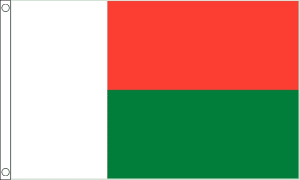Language/Southern-betsimisaraka-malagasy/Vocabulary/Ordinal-Numbers
| ◀️ Cardinal Numbers — Previous Lesson | Next Lesson — Descriptive Adjectives ▶️ |
Introduction[edit | edit source]
In this lesson, we will learn how to use ordinal numbers in Southern Betsimisaraka Malagasy to describe the order of things. Ordinal numbers are used to indicate the position or rank of something in a series, such as first, second, third, and so on. Understanding ordinal numbers is essential for effective communication in Southern Betsimisaraka Malagasy, as it allows us to express concepts like dates, rankings, and order. By the end of this lesson, you will be able to confidently use ordinal numbers in various contexts.
Basic Overview[edit | edit source]
Ordinal numbers in Southern Betsimisaraka Malagasy are formed by adding the suffix -'in-ta after the cardinal number. The suffix -'in-ta is used to indicate the ordinal form of a number. For example, the cardinal number "one" is "isa," and the ordinal number "first" is "isainta."
Here is a table showing the formation of ordinal numbers from one to ten:
| Cardinal Number | Ordinal Number |
|---|---|
| isa | isainta |
| roa | roainta |
| telo | telonta |
| efatra | efatrainta |
| dimy | dimyinta |
| enina | eninonta |
| fito | fitonta |
| valo | valonta |
| sivy | sivyinta |
| folo | folonta |
Using Ordinal Numbers[edit | edit source]
Ordinal numbers in Southern Betsimisaraka Malagasy are used in various contexts, such as dates, rankings, and order. Let's explore each of these contexts in more detail.
Dates[edit | edit source]
When expressing dates in Southern Betsimisaraka Malagasy, ordinal numbers are used to indicate the day of the month. Here are some examples:
- 1st January - Alatsinainy voalohany
- 10th February - Alahady folonta febroary
- 25th March - Alakamisy sivyinta martsa
Rankings[edit | edit source]
Ordinal numbers are also used to express rankings or positions in a series. For example, if you want to say "I am the first student," you would say "Izaho no mpianatra voalohany." Here are some more examples:
- 3rd place - Toerana telonta
- 8th position - Fahitalavitra valonta
- 2nd prize - Saribakoly roainta
Order[edit | edit source]
Ordinal numbers are used to describe the order of things or events. For example, if you want to say "I am the second in line," you would say "Izaho no faharoa amin'ny lalan-kafa." Here are some more examples:
- The third chapter - Tarika telonta
- The fifth item - Zavatra dimyinta
- The fourth house - Trano efatrainta
Cultural Insight[edit | edit source]
In Southern Betsimisaraka culture, ordinal numbers play a significant role in traditional ceremonies and rituals. For example, during the "Fanompoambe" ceremony, which is a celebration of the ancestors, the order of offerings and rituals is determined by the use of ordinal numbers. The use of ordinal numbers adds a sense of structure and hierarchy to these cultural practices.
Furthermore, in traditional storytelling, ordinal numbers are often used to describe the order of events and emphasize their significance. Storytellers use ordinal numbers to captivate their audience and create a sense of anticipation for what comes next in the narrative.
Practice Exercises[edit | edit source]
Now, let's practice using ordinal numbers in Southern Betsimisaraka Malagasy. Complete the following exercises by translating the given phrases into Southern Betsimisaraka Malagasy using the appropriate ordinal numbers.
Exercise 1: Translate the following dates into Southern Betsimisaraka Malagasy.
1. 5th November
2. 15th December
3. 22nd April
4. 30th July
5. 12th October
Exercise 2: Translate the following rankings into Southern Betsimisaraka Malagasy.
1. 4th place
2. 6th position
3. 1st prize
4. 9th position
5. 3rd rank
Exercise 3: Translate the following phrases into Southern Betsimisaraka Malagasy, describing the order of things or events.
1. The second chapter
2. The seventh item
3. The tenth house
4. The sixth day
5. The eighth month
Exercise Solutions[edit | edit source]
Exercise 1: 1. Alakamisy sivyinta Novambra 2. Alahady folonta Desambra 3. Alarobia roainta Aprily 4. Alarobia folonta Jolay 5. Alarobia roainta Oktobra
Exercise 2: 1. Toerana efatrainta 2. Fahitalavitra eninonta 3. Saribakoly voalohany 4. Fahitalavitra valonta 5. Toerana telonta
Exercise 3: 1. Tarika roainta 2. Zavatra fito 3. Trano folonta 4. Andro eninonta 5. Volana valonta
Conclusion[edit | edit source]
Congratulations! You have learned how to use ordinal numbers in Southern Betsimisaraka Malagasy. You can now confidently express dates, rankings, and the order of things in Southern Betsimisaraka Malagasy. Keep practicing and incorporating ordinal numbers into your daily conversations to reinforce your understanding. As you continue your language learning journey, remember to embrace the cultural significance of ordinal numbers in Southern Betsimisaraka culture. Veloma (Goodbye) and mandra-pihaona (until next time)!
Other Lessons[edit | edit source]
- Fruits
- Animals
- Idiomatic Expressions
- Count to 10
- Days of the Week
- Colors
- Introduction and Response
- How to Say Hello and Greetings
- Seasons and Climate Zones
Template:Southern-betsimisaraka-malagasy-Page-Bottom
| ◀️ Cardinal Numbers — Previous Lesson | Next Lesson — Descriptive Adjectives ▶️ |


